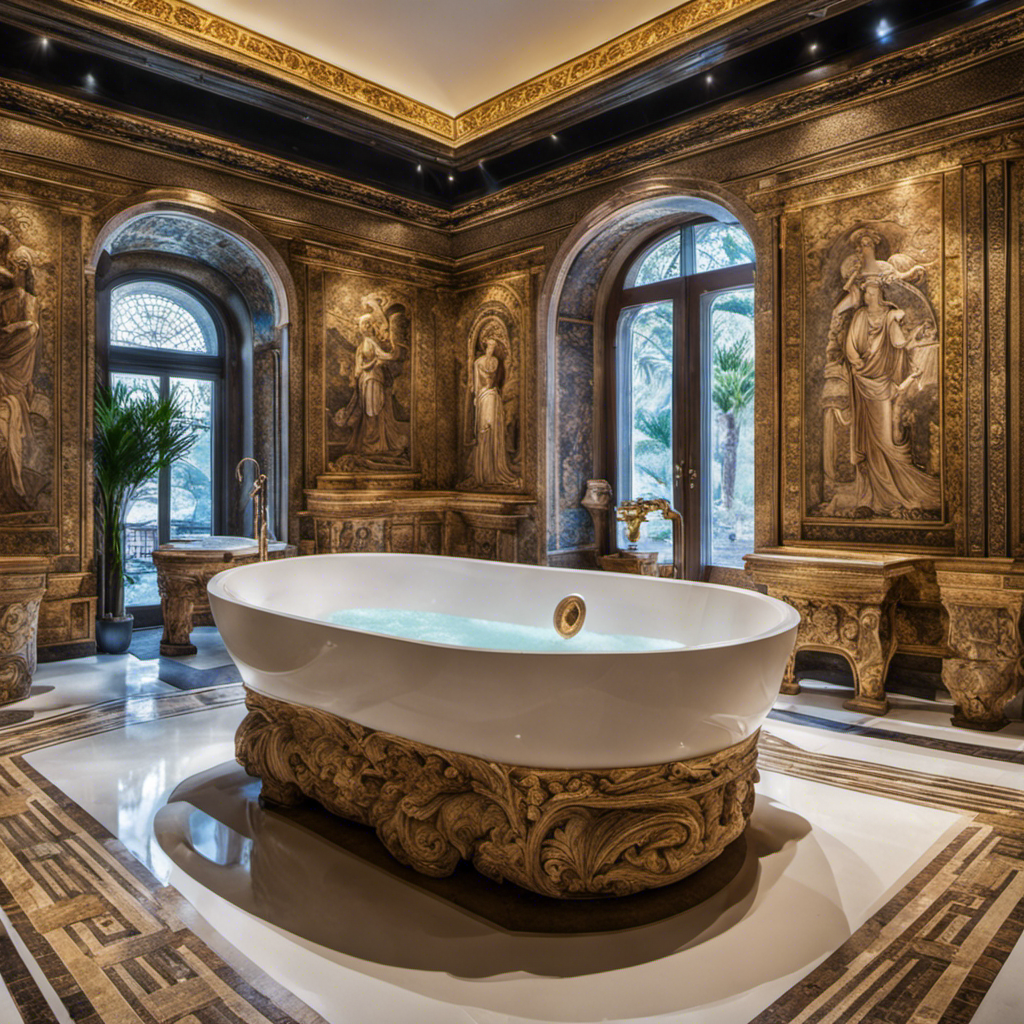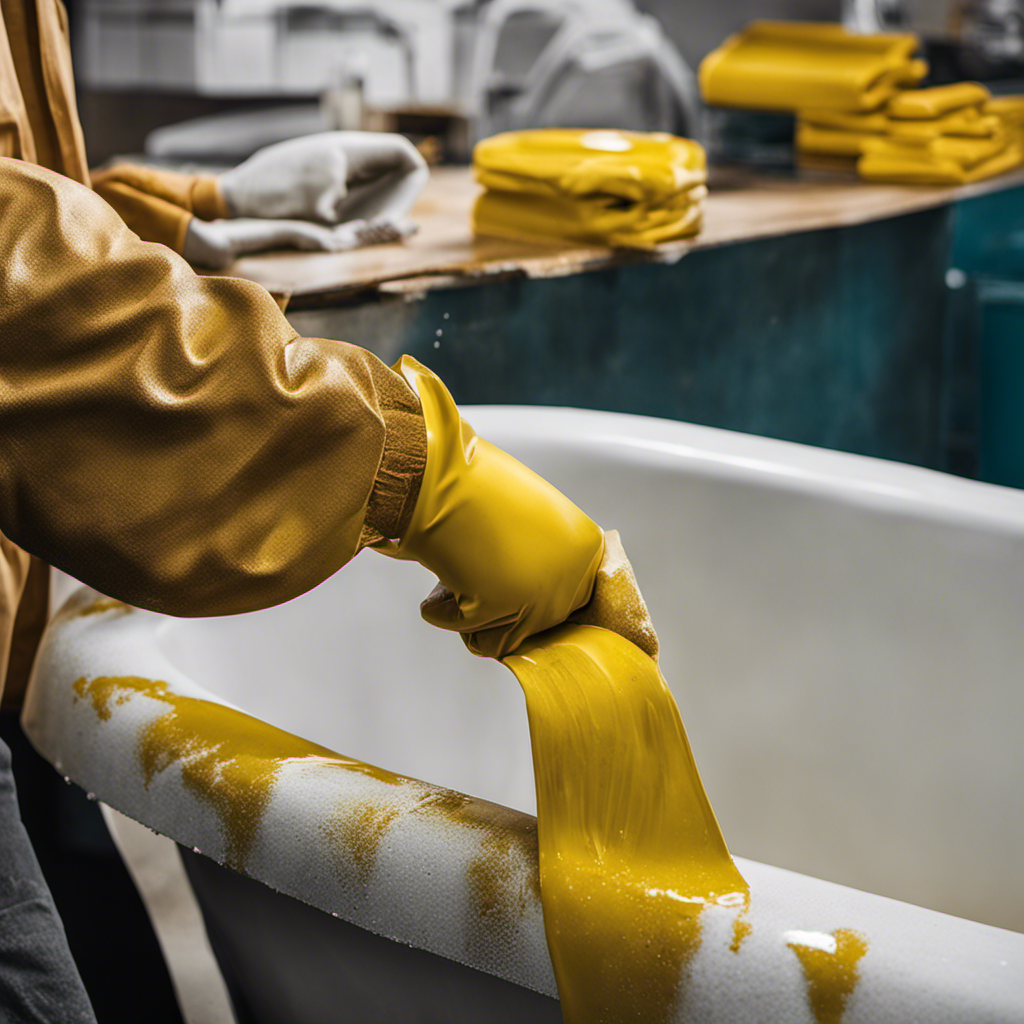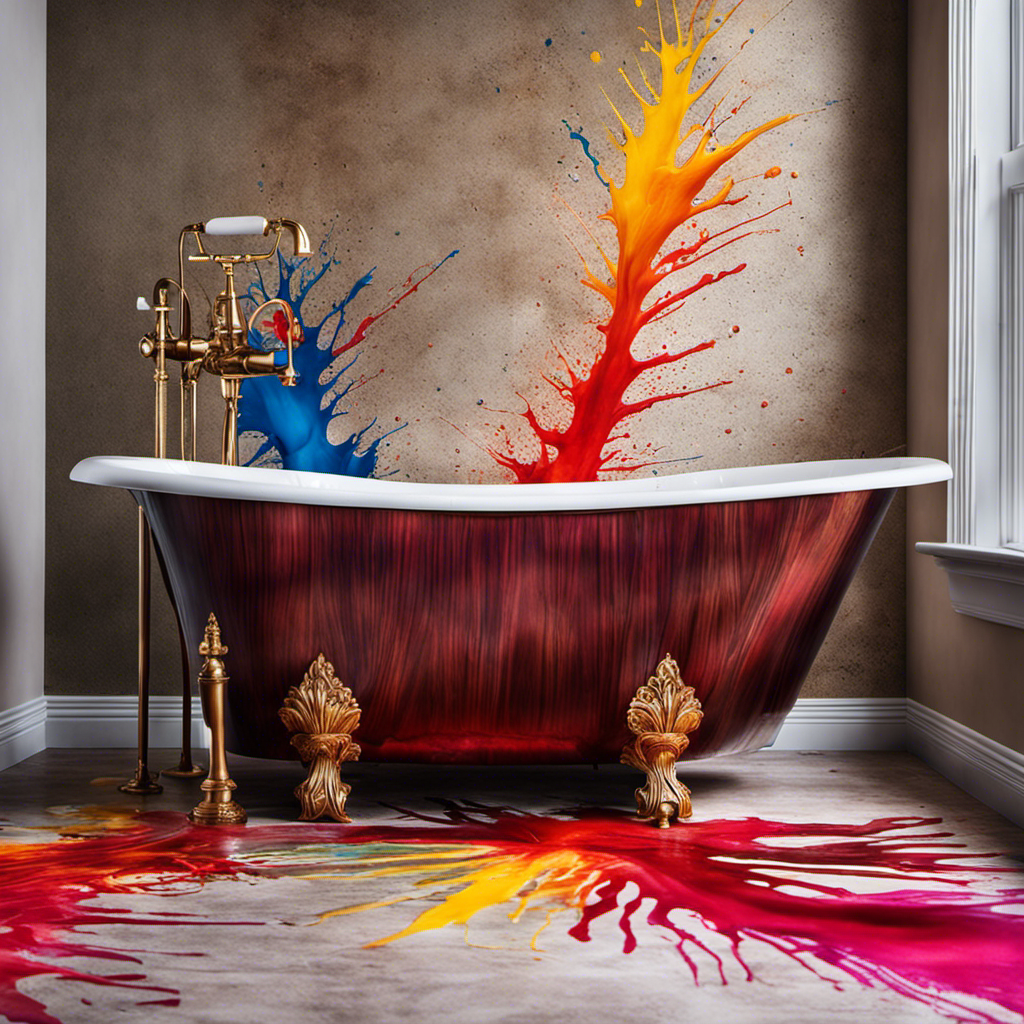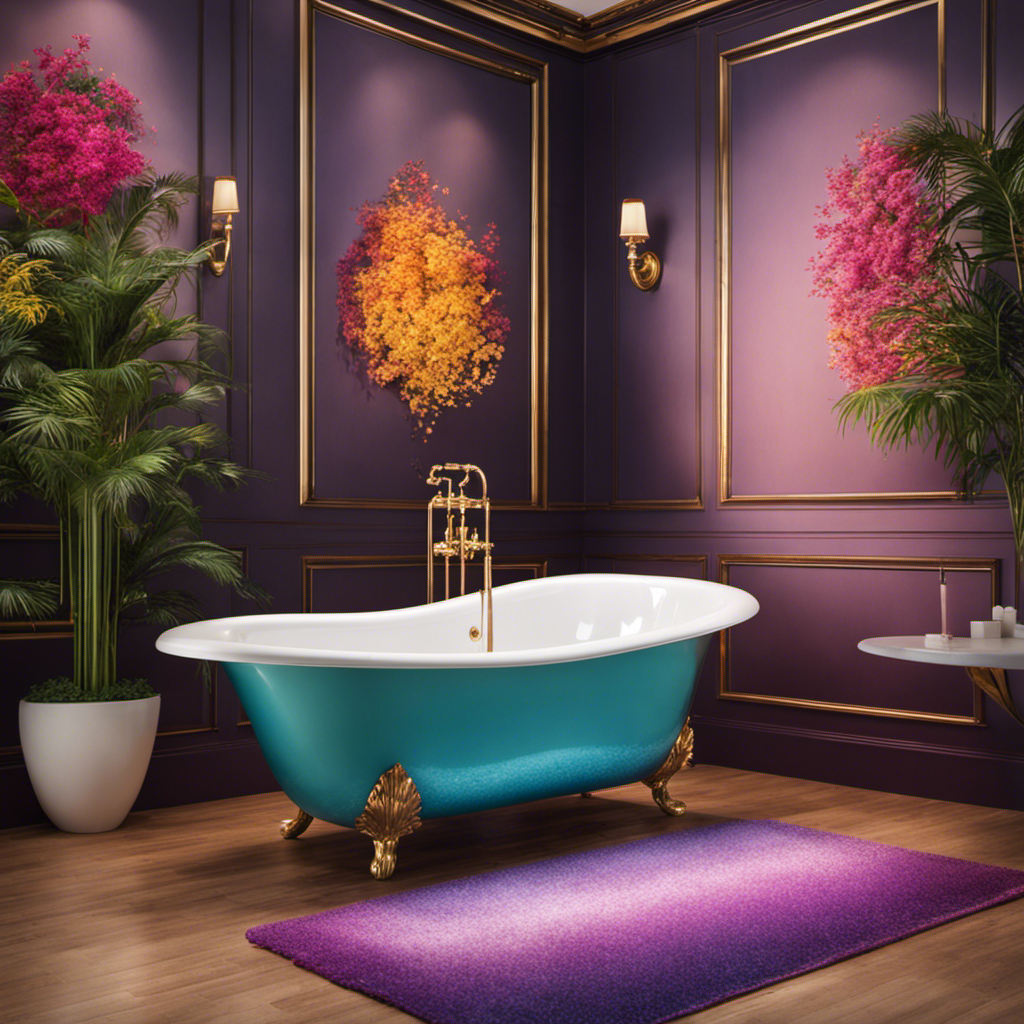Step into a soothing soak as we delve into the history of the humble bathtub.
Have you ever wondered when the first bathtub was invented? Prepare to be amazed as we uncover the ancient origins, early civilizations, and technological advancements that led to the modern bathtub we know and love today.
From ancient bathing rituals to innovative designs, join us on a journey through time to explore the fascinating evolution of this essential fixture in our lives.
Key Takeaways
- Ancient Egyptians and Mesopotamians were the first civilizations to use bathtubs for bathing purposes.
- Bathing in ancient Egypt was seen as a purifying act that cleansed the body and soul.
- Roman thermae and Japanese onsen were examples of ancient civilizations progressing and introducing new ways of bathing.
- Renaissance bathtubs became larger, more comfortable, and connected to a network of pipes and fountains for a continuous flow of water.
Ancient Origins of Bathing
The ancient Egyptians and Mesopotamians were some of the first civilizations to use bathtubs for bathing purposes. Bathing held great ritual significance for both cultures.
In ancient Egypt, bathing was seen as a purifying act that cleansed the body and soul. It was also believed to have healing properties and was often accompanied by religious rituals. The Egyptians even had a goddess, Sekhmet, who was associated with bathing and healing.
Similarly, in Mesopotamia, bathing was an important part of religious rituals and was believed to have both physical and spiritual benefits. The use of bathtubs allowed for more efficient and comfortable bathing experiences, ensuring that individuals could fully immerse themselves in the water.
These early civilizations recognized the importance of cleanliness for maintaining good health and well-being.
Early Bathtubs in Ancient Civilizations
Early civilizations had already developed rudimentary bathing facilities. Ancient bathing practices held great cultural significance, and bathing was not just for hygiene but also for religious, social, and therapeutic purposes.
Here are four examples of ancient bathing practices:
-
Egyptian Ritual Baths: Ancient Egyptians believed that bathing cleansed the body and soul. They would immerse themselves in large communal baths, often scented with aromatic oils and flower petals.
-
Roman Thermae: Romans built grand public bathhouses called thermae. These were extravagant structures with multiple rooms, including hot, cold, and tepid baths, as well as steam rooms, saunas, and exercise areas.
-
Japanese Onsen: The Japanese tradition of bathing in natural hot springs, known as onsen, has been practiced for centuries. These geothermal baths are believed to have healing properties and are deeply ingrained in Japanese culture.
-
Mayan Sweat Baths: Mayans used sweat baths, known as temazcal, for purification and rituals. These small, enclosed structures were heated with hot stones, creating a steamy environment for sweating and spiritual cleansing.
As ancient civilizations progressed, so did their bathing practices. In medieval times, bathtub innovations would continue to evolve, introducing new ways for people to enjoy the benefits of bathing.
Bathtub Innovations in Medieval Times
During medieval times, you would have found new ways to enjoy the benefits of bathing through innovative bathtub designs.
Medieval bathing rituals were an important part of hygiene and health practices. Although not as elaborate as the Roman baths, medieval bathtubs were still designed to provide a comfortable bathing experience.
These bathtubs were often made from materials such as wood, copper, or tin. Wood was a popular choice due to its availability and affordability. Copper and tin were preferred for their durability and ability to retain heat.
The bathtubs were often large and deep, allowing the bather to immerse themselves fully. Sometimes, these bathtubs were even equipped with a drain to enable easy emptying of water.
Overall, medieval bathtub designs were a testament to the ingenuity and practicality of the time.
Renaissance and the Evolution of Bathtubs
You can imagine how the Renaissance period brought about significant changes in the evolution of bathtubs. Renaissance bathing culture was heavily influenced by the revival of the ancient Roman and Greek traditions, leading to the development of more luxurious and elaborate bathing rituals.
Here are four key aspects of Renaissance bathtubs that transformed the bathing experience:
-
Materials: Renaissance bathtubs were typically made of copper, brass, or even precious metals like gold and silver, reflecting the wealth and status of the owners.
-
Designs: Bathtubs became more ornate and decorative, featuring intricate carvings and embellishments, often inspired by classical motifs.
-
Size and Shape: Bathtubs became larger and more comfortable, accommodating multiple people at once. They were often circular or oval-shaped, resembling ancient Roman baths.
-
Water Supply: With the advancement of hydraulic engineering, Renaissance bathtubs were connected to a network of pipes and fountains, providing a continuous flow of water.
These innovations in Renaissance bathing culture not only improved personal hygiene but also became symbols of wealth, luxury, and sophistication.
Modern Bathtubs and Technological Advancements
Nowadays, modern bathtubs have undergone significant advancements in technology, making them more efficient and user-friendly. With technological advancements, bathtubs now come equipped with features such as built-in jets, temperature control, and even integrated music systems. These innovations provide a more luxurious and relaxing bathing experience.
Additionally, sustainable designs have become a priority in the development of modern bathtubs. Manufacturers are now incorporating eco-friendly materials, like recycled plastic or bamboo, into the construction of bathtubs. Water-saving technologies, such as low-flow faucets and showers, are also being integrated into these designs to minimize water consumption.
Furthermore, smart bathtubs with automated functions, like self-cleaning and auto-fill capabilities, are gaining popularity. These advancements not only enhance the overall bathing experience but also promote sustainability and conservation of resources.
Frequently Asked Questions
How Do Modern Bathtubs Compare to Ancient Bathtubs in Terms of Size and Design?
Modern bathtubs are larger and more intricately designed compared to ancient ones. The size comparison shows an increase in space for comfort and relaxation. The design evolution showcases advancements in aesthetics and functionality.
What Were the Main Materials Used to Construct Early Bathtubs in Ancient Civilizations?
In ancient civilizations, the main materials used to construct early bathtubs were stone, clay, and copper. These materials were chosen for their durability and ability to hold water. Stone tubs were especially popular for their strength and longevity.
Did the Concept of Bathing for Hygiene Purposes Exist in Ancient Civilizations?
Bathing for hygiene purposes existed in ancient civilizations, with historical significance and cultural variations. People used various methods such as communal baths, steam rooms, and natural water sources to cleanse their bodies.
Were Bathtubs in Medieval Times Primarily Used by the Wealthy or Were They Accessible to People of All Social Classes?
During medieval times, bathtubs were primarily used by the wealthy, reflecting social implications and class divisions. Accessible to only a select few, these bathing rituals showcased their privileged status and served as a symbol of luxury.
How Have Technological Advancements in Modern Bathtubs Improved the Overall Bathing Experience?
Have you ever wondered how technological advancements in modern bathtubs have improved the overall bathing experience? Innovations like jets, temperature control, and built-in speakers provide a more luxurious and relaxing bath.
Conclusion
So there you have it, my friend. The fascinating journey of the bathtub, from its humble beginnings in ancient civilizations to the technological marvels of the modern era.
Who would have thought that such a simple concept could evolve into a luxurious oasis of relaxation?
The next time you sink into the warm embrace of your bathtub, take a moment to appreciate the centuries of innovation that went into creating that blissful experience. It’s truly a testament to human ingenuity and our never-ending quest for comfort and indulgence.
Happy bathing!










